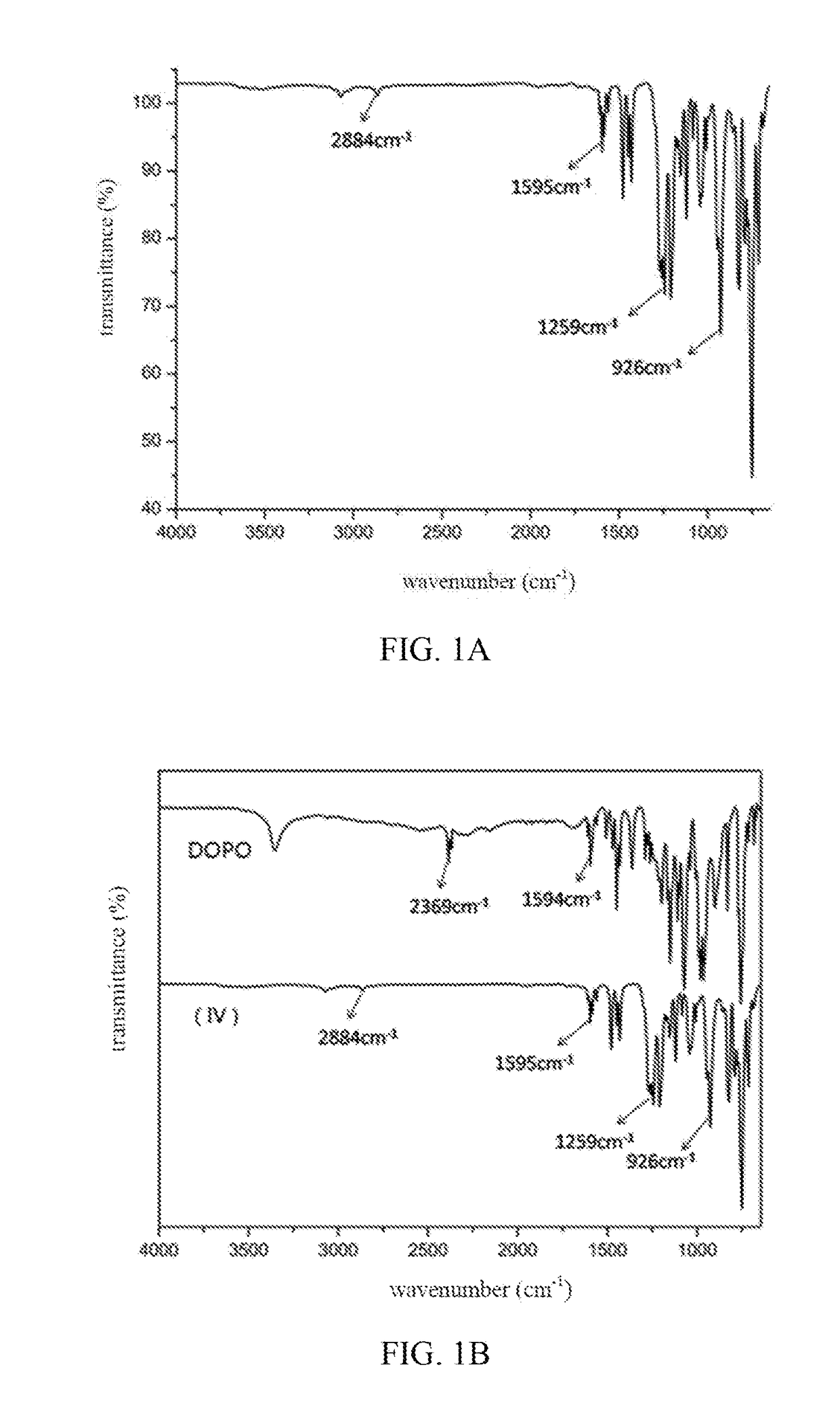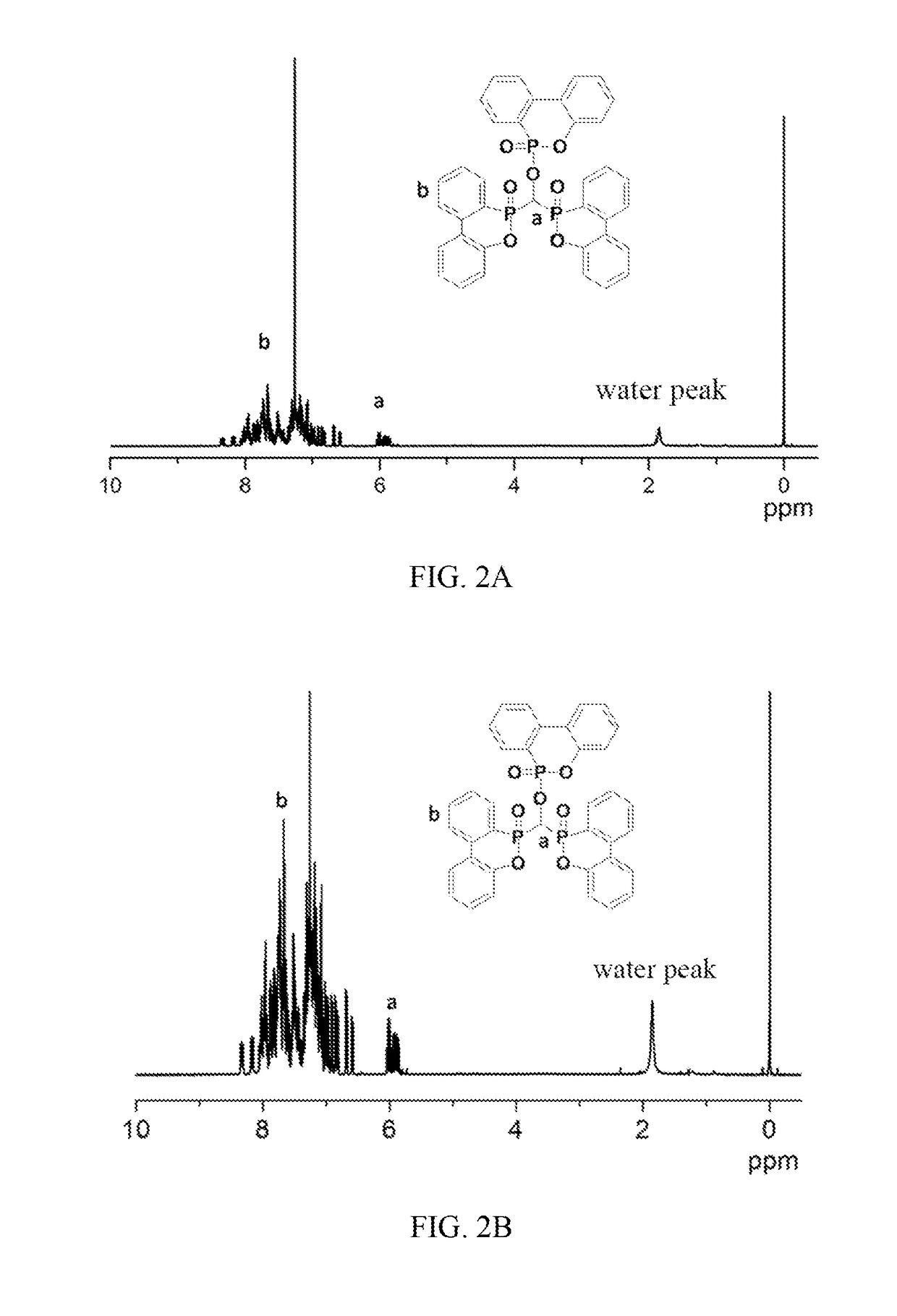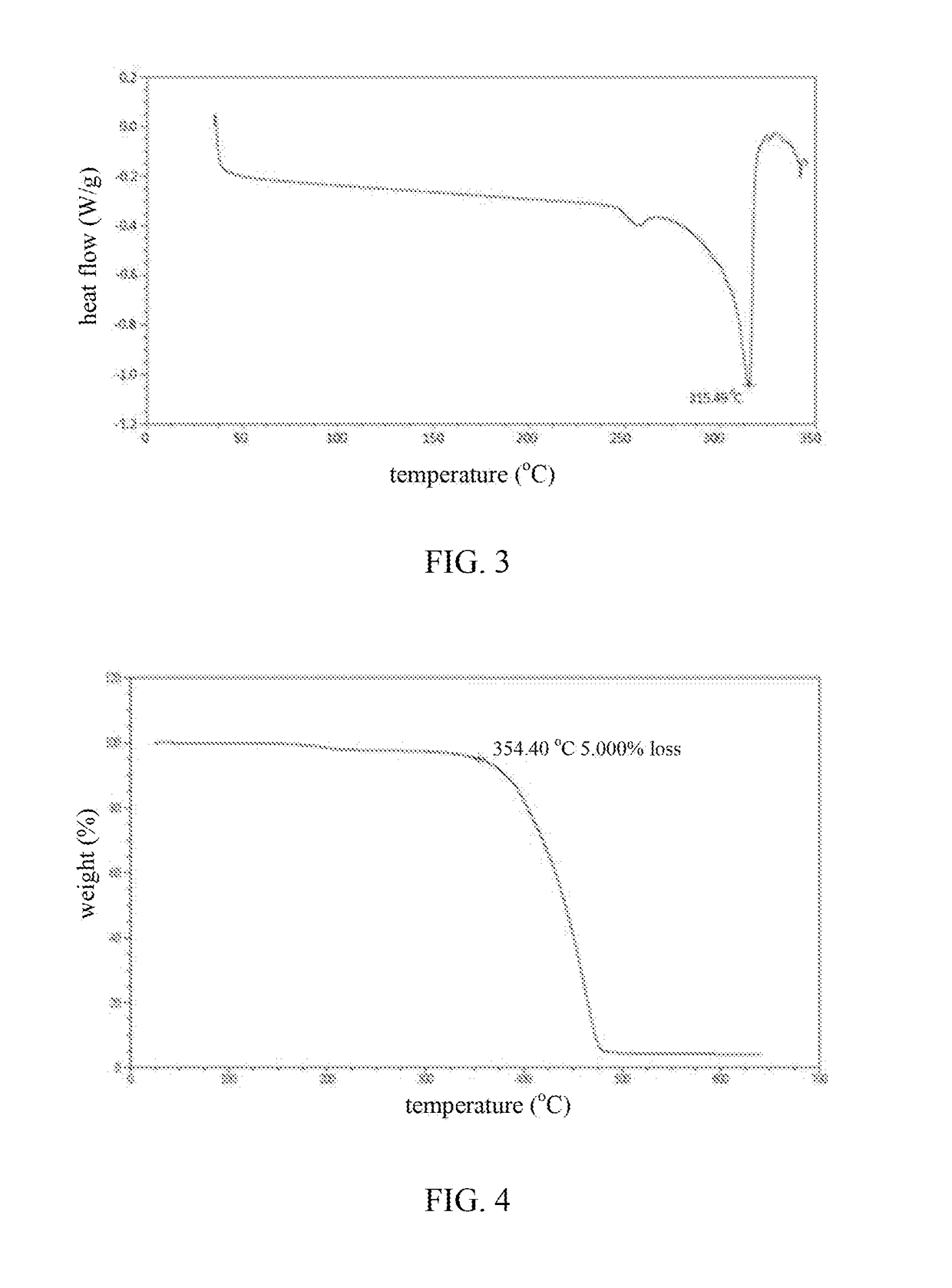Flame retardant compound, method of preparing the same and use thereof
a flame retardant and compound technology, applied in the field of compounds, can solve the problems of poor soldering, low thermal decomposition temperature, and prohibition or limitation of halogen-containing flame retardants, and achieve the effects of low dielectric constant, low thermal expansion coefficient, and high glass transition temperatur
- Summary
- Abstract
- Description
- Claims
- Application Information
AI Technical Summary
Benefits of technology
Problems solved by technology
Method used
Image
Examples
preparation examples
Preparation Example 1: Compound of Formula (IV)
[0103]In a 2000 mL three-necked bottle inserted with a thermometer and a condensation tube, add 1000 mL of toluene and 0.9 mole (about 195 g) of DOPO, followed by heating (about 80° C.) and stirring to promote dissolution until the solution becomes clear. Triphosgene (0.1 mole, 29.8 g) dissolved in toluene is transferred to a constant pressure funnel and slowly dropped into the flask in the presence of nitrogen gas protection, and then heated to a temperature of equal to or higher than the boiling point of the solvent (e.g., 120° C.) to reflow. After 6 hours of reaction, cool the solution to room temperature, followed by filtering and vacuum drying to obtain white powder, with a yield of 92.5%.
[0104]Analyze the white powder by using Fourier transform infrared spectroscopy (FTIR), with the result shown in FIGS. 1A and 1B. As can be observed from FIG. 1A, characteristic peaks in FTIR spectrum appear at 2884 cm−1 (—CH), 1595 cm−1 (P-Ph), 1...
preparation example 2
V)
[0105]In a 2000 mL three-necked bottle inserted with a thermometer and a condensation tube, add 1000 mL of toluene and 1 mole (about 202 g) of DPPO, followed by heating (about 80° C.) and stirring to promote dissolution until the solution becomes clear. Triphosgene (0.1 mole, 29.8 g) dissolved in toluene is transferred to a constant pressure funnel and slowly dropped into the flask in the presence of nitrogen gas protection to carry out reflow at a temperature of equal to or higher than the boiling point of the solvent (e.g., 120° C.). After 6 hours of reaction, cool the solution to room temperature, followed by filtering and vacuum drying to obtain white powder, with a yield of 91.5%.
preparation example 3
VI)
[0106]In a 2000 mL three-necked bottle inserted with a thermometer and a condensation tube, add 1000 mL of toluene and 0.9 mole (about 261.3 g) of bis(2,6-dimethylphenyl)phosphate (formula (XIX)), followed by heating (about 80° C.) and stirring to promote dissolution until the solution becomes clear. Triphosgene (0.1 mole, 29.8 g) dissolved in toluene is transferred to a constant pressure funnel and slowly dropped into the flask in the presence of nitrogen gas protection to carry out reflow at a temperature of equal to or higher than the boiling point of the solvent (e.g., 120° C.). After 6 hours of reaction, cool the solution to room temperature, followed by filtering and vacuum drying to obtain white powder having the structure of formula (VI) wherein R represents methyl, with a yield of 90.5%.
[0107]In addition, as shown in FIG. 3, results from a differential scanning calorimeter (DSC) indicate that compound of formula (IV) has a melting point of about 315.5° C.
[0108]As can be ...
PUM
| Property | Measurement | Unit |
|---|---|---|
| melting point | aaaaa | aaaaa |
| melting point | aaaaa | aaaaa |
| melting point | aaaaa | aaaaa |
Abstract
Description
Claims
Application Information
 Login to View More
Login to View More - R&D
- Intellectual Property
- Life Sciences
- Materials
- Tech Scout
- Unparalleled Data Quality
- Higher Quality Content
- 60% Fewer Hallucinations
Browse by: Latest US Patents, China's latest patents, Technical Efficacy Thesaurus, Application Domain, Technology Topic, Popular Technical Reports.
© 2025 PatSnap. All rights reserved.Legal|Privacy policy|Modern Slavery Act Transparency Statement|Sitemap|About US| Contact US: help@patsnap.com



